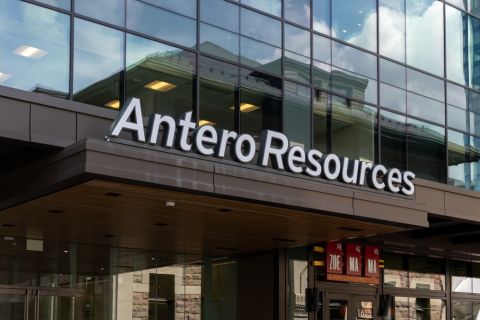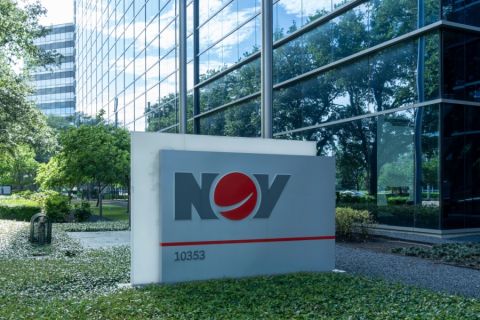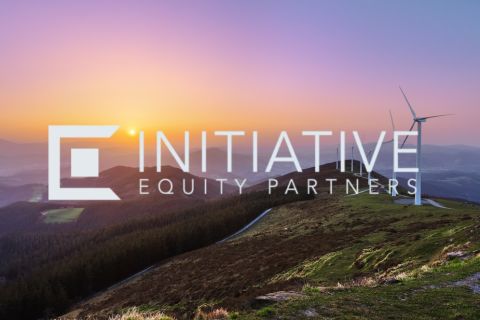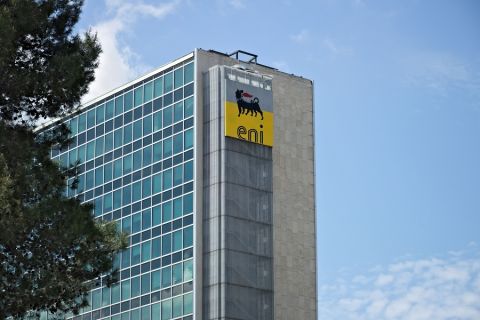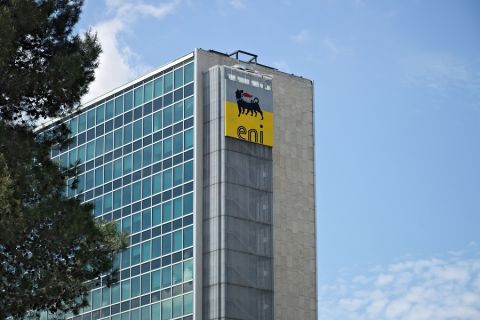Jordan Blum, editorial director, Hart Energy: We are here at CERAWeek by S&P Global in Houston. I'm joined by Colin Parfitt, the president of Chevron Midstream. Thank you so much for joining us. There is a lot of talk about LNG, natural gas and of course the so-called LNG pause from the Biden administration right now. Just to open things up, wanted to get your thoughts on just the impacts and maybe potential long-term ramifications of what's going on right now.
Colin Parfitt, president of midstream, Chevron: Jordan, firstly, thank you for inviting me to talk to you today. And if I think about the LNG pause, we believe that [it is] bad for the climate, we think it's bad for the economy and we think it's bad for the U.S. And I've just expanded a little bit on that. If I think about gas, the substitution of gas for coal in power has been the thing that's really reduced CO2 emissions here in the United States. It's done it in Europe, and that game is really to play in Asia. And so if we enable LNG to move out of the U.S., we enable that transition. So that's good for the climate. Restricting is bad for the climate. If we think about the economy, the gas business here creates jobs and it's good for economic growth. And then if we think about the U.S., one of the problems with this pause is it projects uncertainty to buyers. And so if you are a buyer in somewhere like Europe and you're thinking, do I buy LNG from the United States or do I buy it from somewhere else in the world like Qatar? This gives you a moment to pause and think, is the U.S. a reliable supplier? So we really do not think that this is a good policy for [the] U.S. LNG business.
JB: Very good. So from the U.S. to Australia, Chevron is increasingly playing a bigger and bigger role in LNG in the last several years. Can I get you to just elaborate on the growth trajectory and the future of that part of the business?
CP: So gas in general isn't part of the business. And if I tell you what do we think in Chevron, we really think that we have this big traditional business, oil and gas. We're growing that traditional business and we're doing that because we see the world needs more energy in the future. But at the same time, critically, we're trying to reduce the carbon intensity of it. So our view is the world needs more energy, we need to provide it, but the world also wants lower carbon intensity. At the same time, we're trying to grow a fast-growing [Chevron] New Energies business. And for us, our new energy businesses, [includes] renewable fuels, hydrogen, carbon capture, offsets and the things that we call emerging like geothermal. So we try and claim both of those spaces. So gas is in part of that and we're trying to grow it and also we're trying to reduce the carbon intensity of it.
JB: Just to get in the weeds a little bit on the midstream shipping aspects, can I get you to talk about just how complicated things are getting in terms of trade routes and logistics, especially in the aftermath of everything going on with Russia and Ukraine?
CP: It's a really interesting world from a geopolitics perspective. So if you talk about Russia and Ukraine, maybe I'll give you two different thoughts on geopolitics. Post Russia and Ukraine, we've really seen trade flows change. And so Europe bought 40% of its gas from Russia. With that pipeline flow of gas stopping, that's caused trade flows to change. So when we talk about LNG, a lot of the U.S. LNG is now headed to Europe. We've also seen change in commodity flows like crude oil. So Russian crude oil used to go to Europe. It now predominantly goes to India and China and then Europe has backfilled that by taking grades like WTI, which is U.S. crude and bringing it to Europe. So we've seen trade flows change. Then the other geopolitical issue we have at the moment is trade routes can become a bit challenging. For example, the Red Sea where we have the Houthi shooting of vessels, so that causes vessels not to go through the sewers, canal and the Red Sea and to go round Africa, [which causes] longer freight times and higher freight costs. So there is a lot in geopolitics that really impacts trade flows.
JB: Very good. So from a midstream standpoint, when you think midstream, you think pipelines and shipping, obviously it's a lot more than that, y'all are involved a lot in decarbonization, carbon capture, storage, all these different elements. Can I get you to discuss the trajectory and the growth there?
CP: One of the things we think about, is what we would call the value chain. So how do you take a commodity and you move it through to market? And there were traditional value chains when we started talking LNG. So if I think about gas that's produced in let's say the Permian Basin, we need to make sure the pipelines are built for it, we need liquefaction plants, we need LNG vessels and then we need regasification facilities. So you've got to build out that whole value chain to make it work on what I'd call a traditional energy. You have exactly the same thought with new energies. If I take hydrogen for example, as a type of new energy, there's a lot of conversation about how you manufacture hydrogen, but it's really hard to move. And so you've got to figure out how do you move it. And often that's converting it to something else like ammonia, which is a liquid that you can carry. And then you still have to store it, you have to move it and then you have to get it to the destination. So there are challenges on existing value chains. They can be really similar challenges on the new value chains.
JB: Is hydrogen one of the biggest growth areas going forward?
CP: What you see on the new energies, and I describe them as, renewable fuels, hydrogen carbon capture, things like renewable power, they're all rapidly growing. They're often going from a very low base. And so hydrogen has been around for years. We used it in our refineries. But to try and take hydrogen to large industrial applications, which is where the thought is, we've got this challenge of producing it, moving it, and then finding the customers who have the equipment desire to use it. So it's really creating a whole new business.
JB: Great. And then you have a lot more with fuels to biofuels, sustainable aviation fuels.
CP: So you've got this whole space and one of the beauty of renewable fuels, and you talked about sustainable aviation fuel, renewable diesels would be another, but one of the nice things about those is they drop into existing infrastructure or existing systems. So essentially you can use them in the same tank. If I talk about sustainable aviation fuel, you can co blend it with traditional, what we would call jet in an aircraft. And so from an infrastructure perspective, that's relatively simple because you use existing equipment. Not only is that simple, that kind of saves society a whole bunch of capital dollars because they're already installed. You're essentially using current infrastructure.
JB: Very good. So we've talked a lot about global commodities and global trade, but just to get to the domestic U.S. for a minute. Everything is shale here, obviously Chevron is a huge player in oil and gas. You [also] mentioned the Permian. Can I get you to talk about what are some of the infrastructure midstream needs in terms of really moving all the oil and gas out of the Permian especially, but also the Rockies and other basins.
CP: That’s a really good question. So we are a big player in the Permian Basin in Texas and the D-J Basin in Colorado. And both of those have similar characteristics. They all produce three commodities. It's crude oil, natural gas and natural gas liquids. And you have to treat each of them differently. And then you essentially need to build out the infrastructure. So it might be gathering pipelines to mainline pipelines to essentially get them to either an industrial center or ports. And one commonality with all of that is the U.S. is producing so much that essentially you need to find some way of exporting it. So that's kind of the backdrop. And then the challenge is to make sure we are sufficiently ahead with infrastructure. So you talk about gathering systems, if you've drilled and you've got oil or gas, that is no use unless you can connect it. So you need to get your gathering systems to keep pace. You need your long haul pipelines to keep pace. And then at the end you need to get your export infrastructure to keep pace. It's a challenge with all of that. Just keeping to be ahead. I would describe at the moment, the U.S. is just ahead on that, but that has slightly different flavors in the different basins.
JB: Yeah, especially complicated ones like Chevron and you're focused on not flaring at all too.
CP: One of the things, particularly if I go back to, one of the things we are trying to do is grow oil and gas production but reduce carbon intensity. And that really means you don't flare. And so that means when you want to hook up a well with gas, you have to have connected everything else up for it, otherwise you can't start producing. So it's a really important part of forward planning to make sure you can make the whole thing work.
JB: Very good. Thank you again so much for joining us here at CERAWeek. I really appreciate it. To read and watch more, please visit online at hartenergy.com.
Recommended Reading
Keeping it Simple: Antero Stays on Profitable Course in 1Q
2024-04-26 - Bucking trend, Antero Resources posted a slight increase in natural gas production as other companies curtailed production.
NOV Announces $1B Repurchase Program, Ups Dividend
2024-04-26 - NOV expects to increase its quarterly cash dividend on its common stock by 50% to $0.075 per share from $0.05 per share.
Initiative Equity Partners Acquires Equity in Renewable Firm ArtIn Energy
2024-04-26 - Initiative Equity Partners is taking steps to accelerate deployment of renewable energy globally, including in North America.
Repsol to Drop Marcellus Rig in June
2024-04-26 - Spain’s Repsol plans to drop its Marcellus Shale rig in June and reduce capex in the play due to the current U.S. gas price environment, CEO Josu Jon Imaz told analysts during a quarterly webcast.
Ithaca Deal ‘Ticks All the Boxes,’ Eni’s CFO Says
2024-04-26 - Eni’s deal to acquire Ithaca Energy marks a “strategic move to significantly strengthen its presence” on the U.K. Continental Shelf and “ticks all of the boxes” for the Italian energy company.

